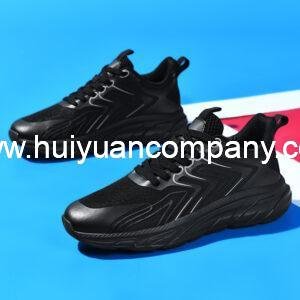The sports shoe industry has experienced exponential growth over the past few decades, with numerous brands entering the market and offering a wide range of products to cater to the diverse needs of athletes and casual consumers alike. This article aims to provide a comprehensive analysis of four prominent sport shoe brands: Nike, Adidas, Puma, and New Balance. We will delve into their history, product offerings, technology, marketing strategies, and overall brand image to determine which brand stands out in terms of performance, design, and customer satisfaction.
1. History and Brand Image
1.1 Nike
Established in 1964, Nike is an American multinational corporation that designs, develops, manufactures, and markets footwear, apparel, equipment, and accessories. The brand is known for its \”Just Do It\” slogan and the iconic Swoosh logo. Nike has built a strong reputation over the years for its innovative products and endorsement of top athletes, making it one of the most recognizable sport shoe brands in the world.
1.2 Adidas
Founded in 1949 by Adolf \”Adi\” Dassler, Adidas is a German multinational corporation that designs and manufactures sports shoes, clothing, and accessories. The brand is easily identifiable by its three-stripe logo and has established itself as a symbol of performance and style. Adidas has also been known for its sustainability efforts and collaboration with renowned designers and athletes.
1.3 Puma
Puma is a German multinational corporation that specializes in designing and manufacturing athletic and casual footwear, apparel, and accessories. Founded in 1948 by Rudolf Dassler, Puma is known for its distinctive logo, which features a leaping puma. The brand has gained popularity for its innovative products and partnerships with athletes and celebrities.
1.4 New Balance
New Balance is an American multinational corporation that designs and markets athletic footwear, apparel, and accessories. Founded in 1906, the brand has a strong focus on providing comfortable and stylish shoes for a wide range of consumers. New Balance is known for its \”N\” logo and has established a reputation for producing high-quality, Made-in-the-USA products.
2. Product Offerings and Technology
2.1 Nike
Nike offers a diverse range of sport shoes catering to various sports, including running, basketball, soccer, and training. Some of their popular shoe models include the Nike Air Max, Nike Zoom, and Nike Free. Nike’s innovative technologies include Nike Air cushioning, Nike React, and Flyknit upper construction, which provide lightweight, responsive, and breathable shoes for athletes.
2.2 Adidas
Adidas offers a wide variety of sport shoes for different activities, such as running, soccer, basketball, and training. Some of their popular models include the Adidas Ultraboost, Adidas Boost, and Adidas NMD. Adidas incorporates technologies like Boost cushioning, Primeknit upper construction, and miCoach smart technology, ensuring comfort, performance, and connectivity.
2.3 Puma
Puma’s product range includes sport shoes for running, soccer, basketball, and training, as well as casual lifestyle footwear. Their popular models include the Puma Faas, Puma Ignite, and Puma RS-X. Puma’s technologies include the FaasFoam cushioning, PUMA IGNITE foam, and evoKNIT upper construction, offering lightweight, responsive, and breathable shoes.
2.4 New Balance
New Balance’s product offerings include sport shoes for running, walking, training, and lifestyle. Their popular models include the Fresh Foam, 860v系列, and 1080v系列. New Balance utilizes technologies like Fresh Foam cushioning, Hypoknit upper construction, and Stabilicore support, providing a comfortable and stable shoe for consumers.
3. Marketing Strategies
3.1 Nike
Nike’s marketing strategy revolves around associating their brand with top athletes and teams, creating a strong connection between their products and performance. They have endorsement deals with numerous high-profile athletes, such as Michael Jordan, Cristiano Ronaldo, and Serena Williams. Nike also leverages social media and digital marketing to engage with consumers and promote their products.
3.2 Adidas
Adidas’ marketing strategy focuses on combining performance and style, appealing to both athletes and fashion-conscious consumers. They collaborate with renowned designers like Yohji Yamamoto and Kanye West, as well as athletes like David Beckham and Pharrell Williams. Adidas also invests in events like the FIFA World Cup and the Olympics to increase brand visibility.
3.3 Puma
Puma’s marketing strategy emphasizes their unique brand identity and association with sports and culture. They have partnerships with athletes like Usain Bolt and Selena Gomez, as well as fashion icons like Rihanna. Puma also collaborates with other brands, such as Carhartt and A Bathing Ape, to create limited-edition products and increase brand appeal.
3.4 New Balance
New Balance’s marketing strategy revolves around their \”Made in the USA\” ethos and focus on comfort and quality. They have endorsement deals with athletes like Fresh prince and Galen Rupp, and have been featured in popular movies and TV shows. New Balance also collaborates with sneaker stores and retailers to create exclusive product releases and limited-edition designs.
4. Performance, Design, and Customer Satisfaction
When comparing the performance, design, and customer satisfaction of these four sport shoe brands, it is essential to consider individual preferences and needs. Nike and Adidas are often considered the top performers in terms of innovation, technology, and endorsement deals, making them popular choices among athletes and sports enthusiasts. Puma and New Balance also offer high-quality products but may be better suited for consumers looking for lifestyle or casual footwear.
Conclusion
In conclusion, the sport shoe industry offers a diverse range of brands, each with its unique history, product offerings, technology, marketing strategies, and brand image. Nike, Adidas, Puma, and New Balance are four prominent players that have established themselves as leaders in the market. While each brand has its strengths and weaknesses, they all provide high-quality sport shoes that cater to the needs of athletes and casual consumers alike. Ultimately, the best choice will depend on an individual’s preferences, budget, and specific requirements.
